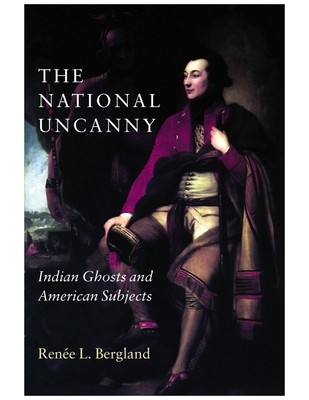
- We will send in 10–14 business days.
- Author: Renée L Bergland
- Publisher: Dartmouth College Press
- ISBN-10: 0874519446
- ISBN-13: 9780874519440
- Format: 15.2 x 22.9 x 1.2 cm, minkšti viršeliai
- Language: English
- SAVE -10% with code: EXTRA
Reviews
Description
Although spectral Indians appear with startling frequency in US literary works, until now the implications of describing them as ghosts have not been thoroughly investigated. In the first years of nationhood, Philip Freneau and Sarah Wentworth Morton peopled their works with Indian phantoms, as did Charles Brocken Brown, Washington Irving, Samuel Woodworth, Lydia Maria Child, James Fenimore Cooper, William Apess, Nathaniel Hawthorne, and others who followed. During the late 19th and early 20th centuries, Native American ghosts figured prominently in speeches attributed to Chief Seattle, Black Elk, and Kicking Bear. Today, Stephen King and Leslie Marmon Silko plot best-selling novels around ghostly Indians and haunted Indian burial grounds. Renée L. Bergland argues that representing Indians as ghosts internalizes them as ghostly figures within the white imagination. Spectralization allows white Americans to construct a concept of American nationhood haunted by Native Americans, in which Indians become sharers in an idealized national imagination. However, the problems of spectralization are clear, since the discourse questions the very nationalism it constructs. Indians who are transformed into ghosts cannot be buried or evaded, and the specter of their forced disappearance haunts the American imagination. Indian ghosts personify national guilt and horror, as well as national pride and pleasure. Bergland tells the story of a terrifying and triumphant American aesthetic that repeatedly transforms horror into glory, national dishonor into national pride.
EXTRA 10 % discount with code: EXTRA
The promotion ends in 22d.22:04:15
The discount code is valid when purchasing from 10 €. Discounts do not stack.
- Author: Renée L Bergland
- Publisher: Dartmouth College Press
- ISBN-10: 0874519446
- ISBN-13: 9780874519440
- Format: 15.2 x 22.9 x 1.2 cm, minkšti viršeliai
- Language: English English
Although spectral Indians appear with startling frequency in US literary works, until now the implications of describing them as ghosts have not been thoroughly investigated. In the first years of nationhood, Philip Freneau and Sarah Wentworth Morton peopled their works with Indian phantoms, as did Charles Brocken Brown, Washington Irving, Samuel Woodworth, Lydia Maria Child, James Fenimore Cooper, William Apess, Nathaniel Hawthorne, and others who followed. During the late 19th and early 20th centuries, Native American ghosts figured prominently in speeches attributed to Chief Seattle, Black Elk, and Kicking Bear. Today, Stephen King and Leslie Marmon Silko plot best-selling novels around ghostly Indians and haunted Indian burial grounds. Renée L. Bergland argues that representing Indians as ghosts internalizes them as ghostly figures within the white imagination. Spectralization allows white Americans to construct a concept of American nationhood haunted by Native Americans, in which Indians become sharers in an idealized national imagination. However, the problems of spectralization are clear, since the discourse questions the very nationalism it constructs. Indians who are transformed into ghosts cannot be buried or evaded, and the specter of their forced disappearance haunts the American imagination. Indian ghosts personify national guilt and horror, as well as national pride and pleasure. Bergland tells the story of a terrifying and triumphant American aesthetic that repeatedly transforms horror into glory, national dishonor into national pride.


Reviews